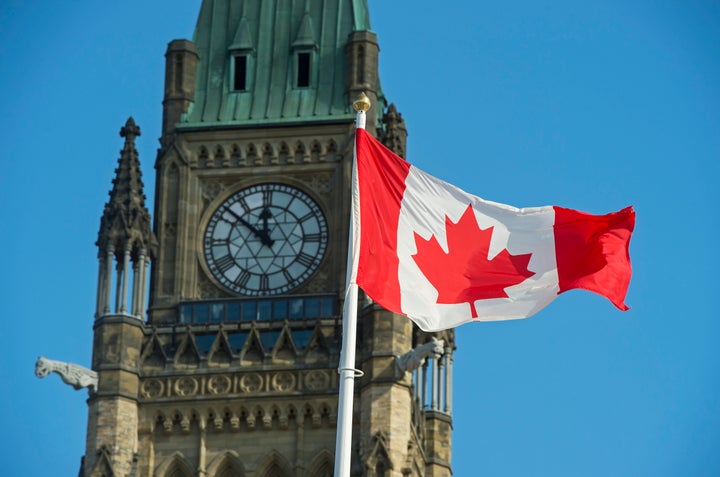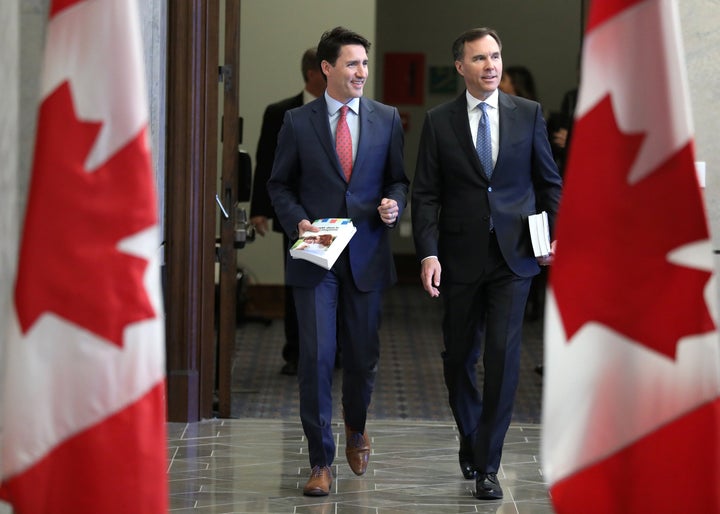
OTTAWA — The federal government is looking for a marketing firm to help launch a “Buy Canadian” campaign to educate more people about where their food comes from.
Agriculture and Agri-Food Canada will oversee a new multimillion-dollar campaign to “instill pride” in the country’s food system, according to a government tender published Monday. It’s the latest movement in the government’s national food policy announced in last year’s budget.
The campaign is intended to “promote Canadian products on the domestic market” by addressing the sentiment that people feel “increasingly disconnected” from food production.
“Canadians generally prefer to buy Canadian food products when they are available, believing that food produced in Canada is of good or excellent quality,” the notice reads, citing research that concludes Canadians have trouble identifying domestic food products in stores.
Watch: Saskatchewan farmers pull together to help grieving family. Story continues below video.
The proposed statement of work notes positive opinions about the country’s food and agriculture industry are “largely based on perception or very limited actual knowledge.”
The ultimate goal of the “Buy Canadian Promotion Campaign” is to get Canadians to “seek and identify” more Canadian-made products to a domestic audience. The notice states the campaign should “tell the story of Canada’s agri-food sector and reach audiences on an emotional level.”
The digital-first campaign will have an advertising budget between $1.5 million to $4 million in each year over five years. Bidding for the contract closes next month.
The federal government has earmarked $25 million for Agriculture and Agri-Food Canada to develop a strategy to increase awareness about the county’s food system. The “Buy Canadian Promotion Campaign” was promised to be one pillar of the new food policy.
Nearly a year after that announcement, some agriculture sector advocates are disappointed with the government’s narrow approach in the development of a food policy.

Mary Robinson, president of the Canadian Federation of Agriculture, suggested that people are susceptible to believing misleading information about the industry because there’s a real disconnect between consumers and food producers today.
“With fewer and fewer Canadians having any direct relationship or contact with modern agriculture, alongside a growing interest in food, this distance from farming often leaves farmers facing conflicting signals in the market,” Robinson told HuffPost Canada.
“They are asked to meet an ever-expanding number of standards and buyer requirements, while still trying to produce food on an affordable basis to remain competitive in the marketplace.”
She said closing the knowledge gap will help Canadians understand the high standards that domestic producers already operate. But concerns remain over the responsibility of the food policy falling on solely the federal agriculture minister’s plate.
Provincial and territorial governments need to be included, Robinson said.
Prime Minister Justin Trudeau’s Liberal government has repeatedly faced pressure to introduce “Buy Canadian” programs in recent years, particularly in response to U.S. protectionist measures implemented under President Donald Trump’s administration.
Mathew Wilson, senior vice-president of the Canadian Manufacturers & Exporters, told a Commons’ committee in 2017 that the country is missing opportunities to increase exports by leveraging Canada’s international reputation of growing “healthy, affordable, high-quality food.”
“It’s crazy,” he told the Commons’ international trade committee at the time. “Instead, Canadian producers often send stuff other places and then it comes back in as finished product and we buy it as Turkish or Israeli or something else, when it’s all Canadian to begin with.”
According to Canadian Food Inspection Agency, items can be labelled “Product of Canada” if they contain 98 per cent or higher of Canadian content.
“Made in Canada” items have a lower threshold. Products under that label need to contain at least 51 per cent Canadian content.